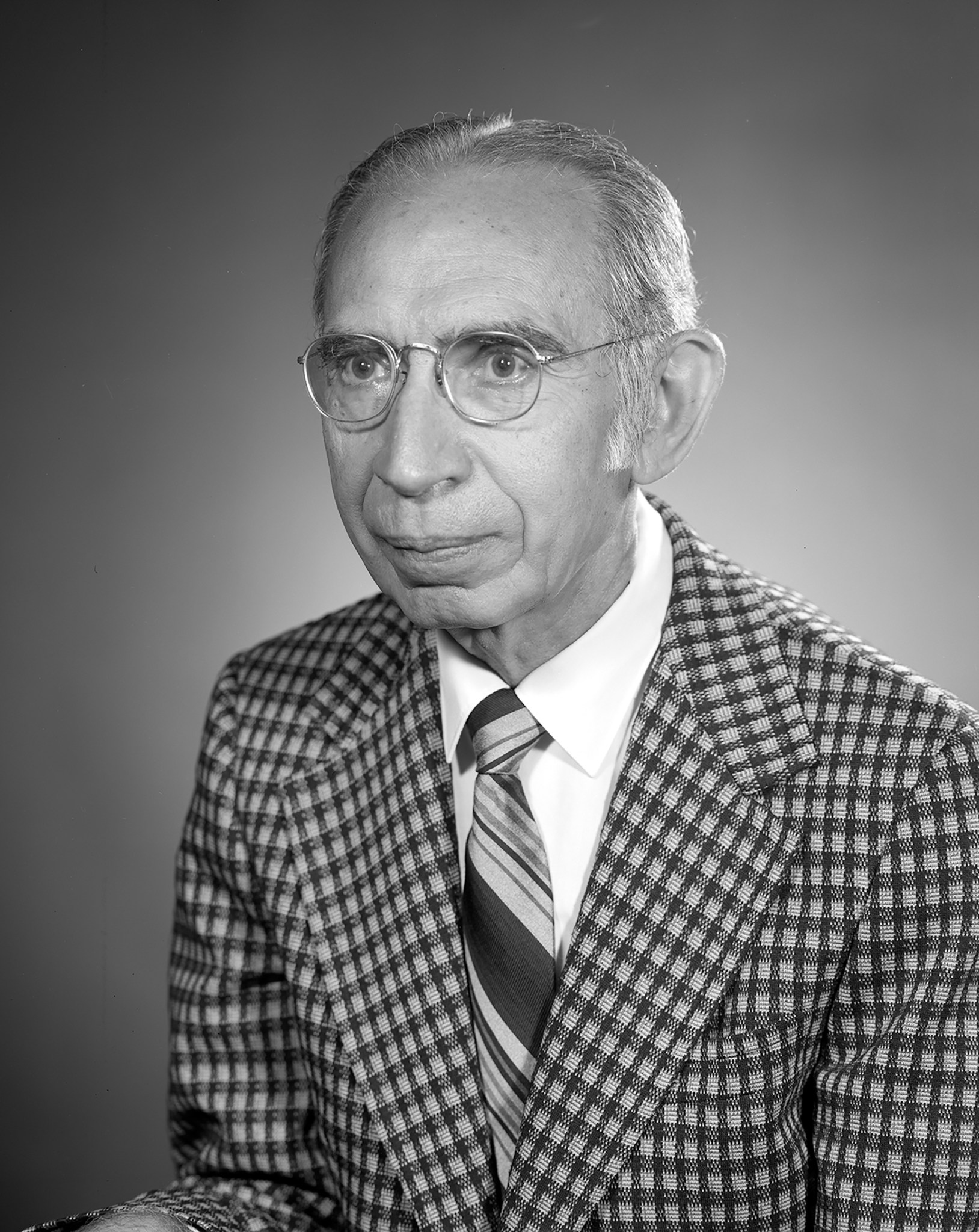Dr. Samuel “Dr. Sam” Katzoff (1909 – 2010) overcame his lack of formal education in aeronautics to become one of the leaders of theoretical and analytical studies for the NACA and NASA.
Dr. Katzoff was born and raised in Baltimore, Maryland, where he attended John Hopkins University, earning B.S. and PhD degrees in chemistry, in 1929 and 1934. His work experiences at college included a diverse range of topics, including x-ray technology, colloid chemistry, antifreeze mixtures, development of commercial oil and wax polishes, and antiknock compounds for motor fuels. After briefly conducting post-graduate research at the university, he applied for a Civil Service position as a Junior Physicist and was hired by the Langley Memorial Aeronautical Laboratory in March 1936, during the Great Depression. He had no training in aerodynamics or the field of aeronautics in general. Recalling his lack of such training, he said, “I didn’t know what made a plane fly; but I knew how to study, and I learned.”
His first assignment at Langley was to provide theoretical analysis in support of the wind-tunnel staff at the Langley Full Scale Tunnel. Most of the projects at the wind tunnel were focused on experimental results, which needed comparison with theoretical predictions in order to understand results and to minimize test time by identifying the most important test conditions. Katzoff was the only physicist within the group of aeronautical engineers at the tunnel; but the staff quickly appreciated his ability to grasp the fundamentals of aerodynamics and correlate experiment with theory. The breadth of his studies included prediction of phenomena such as: maximum lift, downwash in flow fields at the tail location, effects of propeller slipstream on stability and control, flow of air through cooling ducts, drag by momentum considerations, wind-tunnel wall interference effects on experimental aerodynamic data, and conversion of waste heat from engines into useful power.
In 1943, Katzoff’s personal efforts were augmented when he became head of a new group that was specifically devoted to analytical studies at the Full Scale Tunnel. His subordinates held him in high esteem, regarding him as a soft-spoken, fatherly figure. In 1946, he was promoted to Assistant Chief of the Full Scale Research Division, while maintaining responsibility for his group at the wind tunnel. After NASA was formed, he served as the Assistant Chief of the Applied Materials and Physics Division and became deeply involved in space-related research, including leading an influential study team during early planning for the Lunar Orbiter Project. In 1965, Director Floyd Thompson appointed him to the highly-respected position of Langley Senior Staff Scientist.
Katzoff’s technical work focused on theoretical studies, but “Dr. Sam” became legendary for his extraordinary skills at technical writing. Like Pearl Young some 25 years earlier, he set the standard for the manner in which a new generation of researchers documented the results of their investigations. Convinced of a widespread need for guidance on technical writing, he put some of his thoughts on the subject on paper. In 1955, he authored a 25-page NACA guide for technical writers entitled Clarity in Technical Reporting, which became a classic. He did not set out to compose a publication, but the demand of would-be readers virtually forced it into print. The resulting manuscript did not contain a single illustration or bullet point, but it managed to say more in 25 pages than books ten times that size. Clarity in Technical Reporting earned a word-of-mouth reputation as a valuable tool for authors, and it rapidly came into use, requiring four separate printings through the years. For years prior to and after the printing of the document, Dr. Sam acted as a counselor to young engineers coming to work at Langley, guiding inexperienced authors in the art of writing technical reports that measured up to Langley’s exacting standards. Although it had long been widely disseminated at Langley, Clarity in Technical Reporting was only announced for public distribution in 1964. His guide was always included in the orientation materials given to new engineers at Langley.
Katzoff’s personal philosophy regarding the need for clear, concise reporting is captured by these comments from Clarity in Technical Reporting:
“The purpose of the report is to present information. You will hardly disagree with this statement; yet many authors seem to subordinate this purpose and quite forget the poor reader when preparing a report… Apparently, the presumed purpose to present information is frequently forgotten in the author’s desire to show his own brilliance, to impress the boss, to impress the secretary, to demolish the rival, or to get a raise. Worthy as these objectives may be, the basic objective should be to make the report clear and informative; furthermore, if this objective is attained, the secondary objectives will automatically be attained.”
When Katzoff retired from Langley as Chief Scientist in 1974, he moved back to his native Baltimore, where a school principal of his acquaintance talked him into teaching science to sixth-grade youngsters for one hour a week. From that classroom, he moved onto working with older children within the John Hopkins’ Center for Talented Youth for grades K through 12. Eventually, Katzoff funded scholarships to the Center and wrote a book called Twists and Turns and Tangles in Math and Physics: Instructional Material for Developing Scientific and Logical Thinking, which is used by gifted students at the Center in Grades 7-8, along with books by Steven Hawking, Isaac Asimov, and others. It is also available at worldwide bookstores.
Dr. Sam, who spent more than 38 years at Langley, died September 25, 2010, at a retirement community in Pikesville, Maryland. He was 101.



























